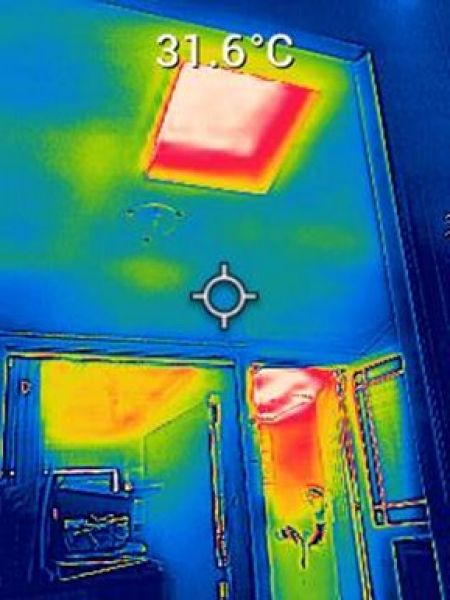Summer is coming!
With summer just around the corner, there are plenty of things you can do to make your home cooler and more comfortable in hot weather. These actions can help you to reduce your energy bills and carbon footprint, whilst creating a healthier living environment. That’s a win-win!
There are four types of action you can take:
- preparing your home for summer,
- keeping cool when it’s hot,
- improving your home’s thermal shell, and
- upgrading your cooling appliances.
Let’s explore each of these in more detail.
Preparing your home for summer
Unless you live in a home designed for excellent, year-round, passive solar performance, the chances are your home will benefit from some adjustments to improve its performance from season to season.
Each home is unique however there are some common actions you can take to improve your home’s capacity to deal with the challenges of hot weather:
- check that any internal or external blinds are in good working order,
- erect shade sails to cover north and west facing windows and walls,
- unblock roof ventilation fans such as whirly birds that you may have blocked for the winter,
- allow vegetation to grow in spring to help with shading. Deciduous plants and vines are great for shading, and
- cover any skylights with fitted blinds or a reflective material. A car windscreen cover will do the trick, cut to size and attached with double sided tape.
Taking actions like these can reduce how much heat gets inside your home in hot weather. By controlling heat from the sun, we go a long way to reduce how hot our homes get during the day. This means we can use less energy to cool the home with appliances such as air conditioners.

An image from a thermal imaging camera showing the heat from a skylight and uninsulated ceiling.
Image credit: Seb Crangle
Cool behaviour
There are other actions you can take to prepare for hot weather or manage the temperature in your house on a hot day. They require some regular effort but can pay off in terms of saving money on energy bills and generally making the home more comfortable to live in:
- close window coverings to prevent direct sunlight from entering the home,
- when the house is already hot, resist using appliances that produce heat such as clothes dryers and ovens,
- use fans to increase the cooling effect of airflow. Even if you are using air-conditioning, the addition of fans will make you feel 2 to 3 degrees cooler, and
- open windows and doors on opposite sides of the home to improve cross ventilation, best done when it is cooler outside than inside, such as in the early morning and evening.

A Scorecard assessor inspecting a client’s insulation to advise on its adequacy.
Image credit: Louise Wedgwood
Improving your thermal shell
Your home’s thermal shell is made up of the materials that contribute to protecting you from the outside elements, such as roof, walls and windows. In summer, the thermal shell does this by preventing direct sun from hitting windows and walls and resisting warm air from entering the home. Here are some ways you can improve your home’s thermal shell to improve comfort and reduce energy consumption:
- add insulation to ceiling cavities, under floors and in wall cavities if possible,
- install retractable external awnings and blinds to windows facing east, west and north,
- add ventilation to ceiling cavities, either passive 'whirly birds' or, preferably, powered ventilators, and
- seal gaps around doors and windows and through floorboards. This will reduce uncontrolled draughts that can make your home hotter and make the cooling appliances work harder and use more energy.

External blinds and shaded pergolas help prevent heat gain from direct sunlight.
Image credit: Seb Crangle
Running air conditioners
Your home will use more energy to keep it comfortable if the cooling appliances are inefficient. Here are a few key tips for getting the most out of air conditioning:
- clean the filters in your air conditioning unit to improve how efficiently it runs,
- use the dry mode to reduce the humidity in your home, which will make you feel cooler,
- have your air conditioner serviced before the start of summer. If you have a ducted air conditioner, have the ducts checked for air tightness every 3 years or so,
- set your air conditioner’s thermostat to a moderate temperature, for example 24-26 degrees. You might be surprised to find the house is comfortable at those temperatures, and
- if you are buying a new air conditioner, be sure to check its energy rating. An air conditioner with a higher star rating will consume less energy to produce the same cooling effect, saving you money year after year. You can look up the star rating and running costs over 10 years at this website: https://calculator.energyrating.gov.au/. Take note that the ratings of air conditioners vary according to the climate you live in. For example, a model that scores 4 stars for heating in a hot climate, might only score 2 stars in a cold climate.

An assessor explaining the heat load from an uninsulated wall.
Image credit: Seb Crangle
Targeting your actions
Every home is unique, from its design, materials, climate, and orientation, to the efficiency of its fittings and appliances. The best solutions to improving energy performance are unique to your home, and the best way to identify them is with help from a qualified energy assessor. Residential Efficiency Scorecard is the perfect way to get the targeted information you need to improve the comfort of your home and reduce energy costs. Scorecard is a national program with government accredited assessors available to perform assessments across all parts of Australia. Booking a Scorecard assessment is your first step to making your home a more comfortable, healthier and less expensive place to live.
Article by Seb Crangle
Page last updated: 20/02/25



